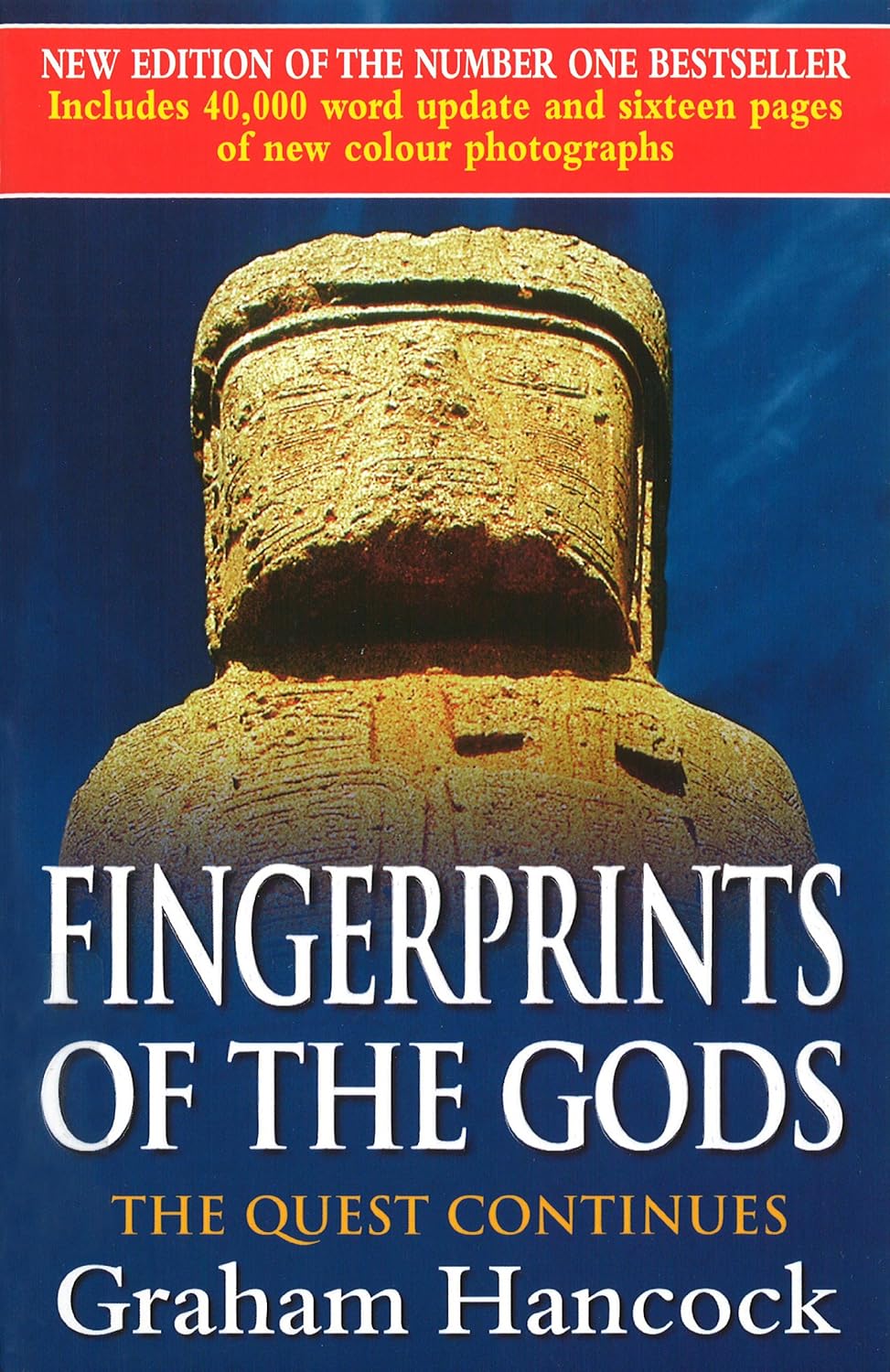
Fingerprints Of The Gods: The International Bestseller From the Creator of Netflix’s ‘Ancient Apocalypse’.
FREE Shipping
Fingerprints Of The Gods: The International Bestseller From the Creator of Netflix’s ‘Ancient Apocalypse’.
- Brand: Unbranded

Description
The map, showing the coastline of the east coast of the Americas and the west coast of Africa, the Colonel remarked, also seemed to show the coastline of Queen Maud Land in Antarctica free of ice – a condition it had not been in for some 9000 years! Pringle draws attention to Fingerprints' "wild speculations" on the origins of Tiwanaku and describes Hancock as a "fabulist".
However, sandwiched between these remains and the rear of the Temple, they also found unmistakable signs that ‘a large underground building’ lay concealed. Having descended this stairway, I passed under the hulking lintel slabs of the great gateway Naville (and Strabo) had described and crossed a narrow wooden footbridge-again modern-which brought me to a large sandstone plinth. But out of the many counter-argument articles from archaeologists that I’ve read so far – even the most credible ones like Flint Dibble from Cardiff University – none of them have convincingly debunk him.
Since I have learned to respect those long-forgotten and still only hazily identified Newtons and Shakespeares and Einsteins of the last Ice Age, I think it would be foolish to disregard what they seem to be saying. Proposition (a)-that the core edifice of the Osireion had been built millennia before Seti’s time-rests on the nature of the architecture itself. In their 1903 season of digging they uncovered parts of a hall and passageway, lying in the desert about 200 feet south-west of the Seti I Temple and built in the recognizable architectural style of the Nineteenth Dynasty. What are we to make, for example, of the Popol Vuh, which speaks in veiled language about a great secret of the human past: a long-forgotten golden age when everything was possible – a magical time of scientific progress and enlightenment when the ‘First Men’ (who were ‘endowed with intelligence’) not only ‘measured the round face of the earth’ but ‘examined the four points of the arch of the sky’.
Suppose that we had calculated, on the basis of sound evidence and beyond any shadow of a doubt, that our civilization was soon to be obliterated by a titanic geological cataclysm – a 30° displacement of the earth’s crust, for example, or a head-on collision with a ten-mile-wide nickel-iron asteroid travelling towards us at cosmic speed. Nevertheless – if there were sufficient advance warning – steps would be taken to ensure that there would be some survivors and that some of what was most valuable in our high scientific knowledge would be preserved for the benefit of future generations. But here in this book Hancock, just like Campbell, not only found the common themes of the myths and merge them into an insane single narrative, but he also takes the similarities into a more investigative mode and turned the stories somewhat into historical records. The Sagittarian archaeologists would not only have to use their wits to work out the meaning of the message (i.It covered a grand expanse of almost 1700 years, beginning around 3000 BC with the reign of Menes, first king of the First Dynasty, and ending with Seti’s own reign around 1300 BC. For what was the Osireion if was not a huge, unsolved mystery that deserved closer scrutiny than it has received from the scholars whose job it is to look into these matters? Could an experienced race of ancient seafarers have become involved with the indigenous inhabitants of the Nile Valley at some indeterminate period before the official beginning of history at around 3000 BC?
We have the ability, unique in the animal kingdom, to learn from the experiences of our predecessors. In that case, a monument or calendrical device declaring ‘lived when the vernal equinox was in the constellation of Pisces’ would no longer be unambiguous. The cells are connected by a narrow ledge between two and three feet wide; there is a ledge also on the opposite side of the nave, but no floor at all, and in digging to a depth of 12 feet we reached infiltrated water. From the predictability of this motion it follows that if we can find a way to declare: WE LIVED WHEN THE VERNAL EQUINOX WAS IN THE CONSTELLATION OF PISCES we will provide a means of specifying our epoch to within a single 2160-year period in every grand precessional cycle of 25,920 years.The flames of the Brahmastra-charged missiles mingled with each other and surrounded by fiery arrows they covered the earth, heaven and space between and increased the conflagration like the fire and the Sun at the end of the world … All beings who were scorched by the Brahmastras, and saw the terrible fire of their missiles, felt that it was the fire of Pralaya [the cataclysm] that burns down the world. However, as Hancock shows repeatedly in the book, there are several evidence that refute this narrative – from the Piri Reis Map to Gobekli Tepe – which shows that there were already an advanced technology or advanced understanding of the world way before 4000 BC but all of which are ignored or dismissed by archaeologists simply because they don’t fit with the agreed upon narrative. Tied in with these myths Graham begins to crack an ancient code imprinted in these ancient tales that refer to the ‘great mill’ of the heavens. By the same token, what might be the function of the great myths of precession which speak not just of previous cataclysms but of cataclysms to come and which (through the metaphor of the cosmic mill) link these earthly disasters to ‘disturbances in the heavens’?
- Fruugo ID: 258392218-563234582
- EAN: 764486781913
-
Sold by: Fruugo
